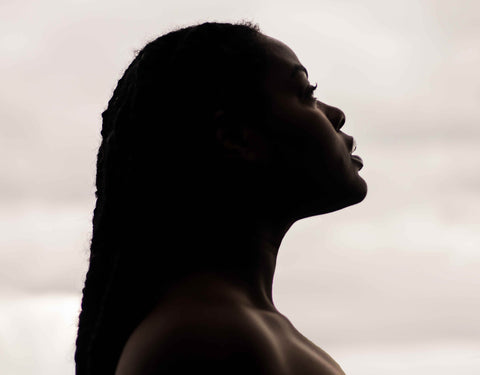We get to know our hair the most deeply on wash day. Whether we have a clear cut, tried-and-true routine that we swear by, or we’re endlessly mixing and matching new formulas and techniques to try and find what works best for our loose locks, braids or protective styles, wash day is a sacred, soulful ritual where we uncover and discover all the ins and outs of our scalp and strands.
But textured hair is naturally vulnerable to dryness, and too much cleansing can further strip essential nutrients and moisture from strands.
Without the ability to remove buildup and re-hydrate with daily washes, it can take extra love and care to keep both strands and scalp healthy, hydrated and happy on the days that fall between them.
"Why is My Hair So Dry Between Wash Days?"
While some struggle with dryness is to be expected, for some hair patterns, type 3 and 4 in particular, the battle to combat drying, breaking and frizzing strands can feel endless, especially when we don’t understand why it’s occurring.
Washing too frequently – If your normal wash day schedule is every six or seven days and you’re noticing drier strands, try moving wash day to every eighth or ninth day.
Over-manipulation – How you’re styling, and what tools you’re using, can be a factor in strands lacking in hydration. Heat is a moisture magnet, so if you’re turning to tools that utilize heat like straighteners, curling irons, and blow dryers, that could be laddering up to dryness and breakage.
Air and Environment- In truth, it may not be anything you’re doing wrong. Depending on where you live, if you lead an active lifestyle, and how much time you’re spending outdoors, environmental factors like humidity, harsh air or excessive sun exposure can all play a part in hair struggling to hold hydration.
Recognizing Dryness at Its Onset
The best way to counteract dryness is to recognize its early signs, and then answer it with nourishment and hydration. When strands begin to lose moisture, they will start to feel brittle to the touch rather than soft and silky, and you’ll see more stray hairs and split ends when you’re looking in the mirror.
But the strongest indicator that dryness is starting to emerge is to keep a close watch on your scalp. Strong strands can only grow from a nourished, healthy scalp, so if you begin to see redness, inflammation or irritation, that’s message from your scalp’s microbiome that it's out of balance.
When hair shows early signs of dryness, your response is hydration.
How to Hydrate Hair Between Wash Days
For Type 3 Curls or Coils
For loose curls worn naturally, you can layer different products and formulas to hone in on moisturizing between washes. Run a leave-in conditioner through strands every morning to start the day with a dose of hydration, and follow with oil if needed. Use only as much oil as you need to prevent buildup.You’ll see strands noticeably shift from dull and dry to lifted and shining with a small amount of the right oil.
Throughout the day, reach for a lightweight hydrating essence or mists rather than doubling up on your leave-ins and oils. Essences don’t settle on strands as heavily, and they can be used more frequently, especially on hot, humid days when frizz and breakage tend to be more prevalent.
For Type 4 Kinks Prone to Frizz
Frizz is an always-ongoing challenge for Type 4 hair, but thankfully one of the easiest to counteract. Strands frizz when their moisture supply is depleted, so they turn outward to try and soak up hydration from their surroundings. That’s why humid days when the air is thick with condensation can be the hardest to keep frizz at bay.
Leave-in conditioners that are lightweight in nature are the saviors for type 4 hair. The more slip the formula has the better, because it means you can use less, preventing buildup that ultimately can just lead to additional frizz.
UZIMA Tip: UNYEVU Leave-in Conditioner is the first place we turn for negating frizz. The fiercely hydrating formula packed with African baobab and multi-molecular weight snow mushroom alleviates frizz in as little as 5 minutes.
For Braids and Other Protective Locks
When hair is styled in protective locks, it can become challenging to rely on leave-ins and oils that need to be run through strands. That’s where hydrating essences and mists come in. Opt for formulas that refrain from using oils and emollients and stick to natural lightweight hydrators like the fermented rice water in USAWA Fermented Rice Essence.
It’s important to remember that locks in braids and protective styles tend to leave the scalp exposed, leaving it more vulnerable to harsh air and sun exposure. Keep a deeply nourishing scalp serum in your arsenal to keep your scalp healthy and in balance, particularly if you start to see redness or inflammation, or if your scalp begins to feel itchy or dry.
Pay close attention to the signs of dryness as your hair presents them, and put your between-wash day worries at ease.


